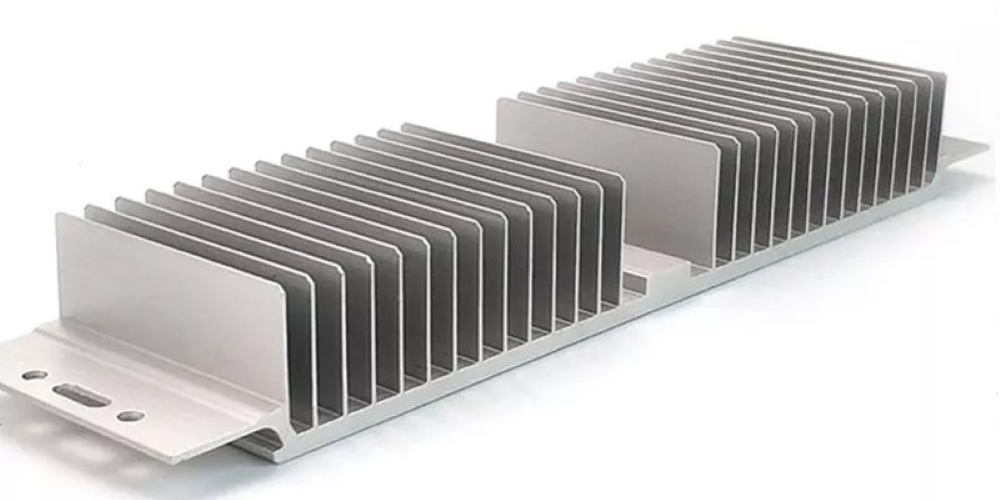The production of plate fin and cross-cut heat sinks is most efficiently accomplished through heat sink extrusion. In comparison to other methods of mass manufacturing, this one has the lowest costs per unit produced and requires the fewest tools.
Extruded parts made from AL6063 have great mechanical qualities and a sleek finish. 6063 has a thermal conductivity just a hair lower than pure aluminum but significantly greater than die-casting alloys.
While the price will rise due to secondary machining, it will still be inexpensive unless it requires considerable work. In this article, you'll learn about the top benefits of an extruded heat sink.
What is an Extruded Heat Sink?
Heat sinks made from extrusions are currently the standard in thermal management. Producers obtain the final form by forcing hot aluminum billets through a steel die during production.
The first extruded sticks are 30–40 feet long and pliable because the material is so soft. The material gets stretched by pulling by grabbing both ends.
The material is either air or overaged after stretching to get the desired ultimate hardness. Once the material has been aged, it is ready for fabrication to its final dimensions after being cut to length.
The Top Benefits of a Standard Extruded Heat Sink
Benefit#1: Lightweight
Due to its low density, aluminum alloy is significantly more convenient to work with than heavier materials. For this reason, extruded aluminum heat sinks are widely used, particularly for installations in portable electronic equipment, due to their lightweight design.
Benefit#2: High Resistance
Due to its exceptional resistance to corrosion and rust, the extruded aluminum heat sink has a long useful life. The thick film surface and solid oxide enhance its durability in high-temperature water.
Benefits#3: Energy Saving
Aluminum is the most often used material for heat sinks because of the substantial amounts of energy it saves in production. Heat sinks made of extruded aluminum effectively dissipate high temperatures up to twice as well as those made of cast iron.
Benefit#4: Cost Effective
While copper heat sinks dissipate heat more effectively, extruded aluminum heat sinks are far cheaper to produce and buy.
Aluminum's low cost and abundance make it a desirable commodity in many different sectors. At around one-third the price of copper, aluminum's low cost is a significant perk.
Benefit#5: Safe to Use
This one has a unique resistance, unlike heat sinks composed of copper, iron, or steel. Due to its high pressure and impact resistance, there is less potential for damage or blunders during handling or installation. The likelihood of injuries occurring during production and handling gets lesser.
Conclusion
Producers may make this type of heatsink in a wide range of sizes, colors, and shapes, thanks to the many extruded heat sink profiles available.
Extruded aluminum heat sinks are an excellent investment since they provide outstanding thermal conductivity at a manageable price for every household.
It can function as a chip on the device's motherboard or as a heat-dissipation system, making it a very adaptable heat sink. These benefits make the extruded aluminum heat sink perfect for mass production and retail sales.


